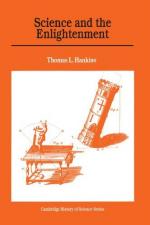
|
| Name: _________________________ | Period: ___________________ |
This test consists of 5 multiple choice questions, 5 short answer questions, and 10 short essay questions.
Multiple Choice Questions
1. Robert Whytt and Charles Aston studied the properties of ________ and ________ according, to the narrator in Chapter 4.
(a) Boiling water / freezing water.
(b) Quicklime / limewater.
(c) Magnesium citrate / quicklime.
(d) Lemonlime / electrical heat.
2. Early in the seventeenth century ________ urged the creation of a great dictionary that would bring together in an orderly fashion all of the practical knowledge that was known only to craftsmen in their respective trades.
(a) Chambers.
(b) D'Alembert.
(c) Montesquieu.
(d) Bacon.
3. Baron d'Holback's "System of Nature" became known as the ________, according to the narrator in Chapter 6.
(a) Atheists' Bible.
(b) Christian Bible.
(c) World Almanac.
(d) Reader's Digest.
4. What was Diderot's first philosophical work, according to the narrator in Chapter 5?
(a) On the Interpretation of Nature.
(b) Philosophical Thoughts.
(c) Encyclopedie.
(d) The Letter on the Blind.
5. The narrator explains that the most important elements for the Chemical Revolution were ________ and ________.
(a) Earth / Water.
(b) Air / Earth.
(c) Air / fire.
(d) Fire / Earth.
Short Answer Questions
1. In Chapter 5, who adopted a theory of generation similar to that of Maupertuis and in his second volume of his "Natural History," he brought forward his theory of organic molecules, interior mold, and penetrating force?
2. Who was the most important German chemist, whose papers in the "Memoires" of the Berlin Academy, during the 1740s and 1750s, earned the admiration of the French chemists?
3. Joseph Black studied chemistry with ________ at Glasgow, serving for three years as his assistant, according to Chapter 4.
4. Haller carried out his famous investigations into the sensibility and irritability of __________, according to Chapter 5.
5. In February 1744, ________, master apothecary to the French Army, published an article on the red precipitate of mercury "per se" in "Observations sur la physique, sur l'histoire naturelle, et sur les arts."
Short Essay Questions
1. What is natural history? What does natural mean in the Aristotelian sense?
2. What did Descartes conclude about mechanical philosophy and the study of life?
3. Briefly explain Joseph Black as described in Chapter 4.
4. Discuss the three social classes in France as described in Chapter 6.
5. Describe the three primary kinds of governments Montesquieu distinguished between in Chapter 6.
6. What two other academic chores brought the problem of combustion to Lavoisier's attention?
7. What were a couple ways to promote the science of man according to Chapter 6?
8. Explain the importance of electricity producing muscle contractions.
9. Discuss Regnier de Graaf's experiments on digestive fluids.
10. Briefly discuss Du Pont de Nemours as described in Chapter 6.
|
This section contains 876 words (approx. 3 pages at 300 words per page) |

|




